RUSH: Now, here’s the story out of Wuhan. Does anybody believe this? The ChiCom city of Wuhan where the coronavirus was discovered reported no new cases for a sixth straight day. There was a decline in infections for a fourth consecutive day across mainland communist China. Only 31 new cases on Monday. Now, something here is not making sense to me. This is where it began. It began in December. We are here at the end of March, and they’re telling us that it’s over in China. No new cases, no new infections, everything’s open.
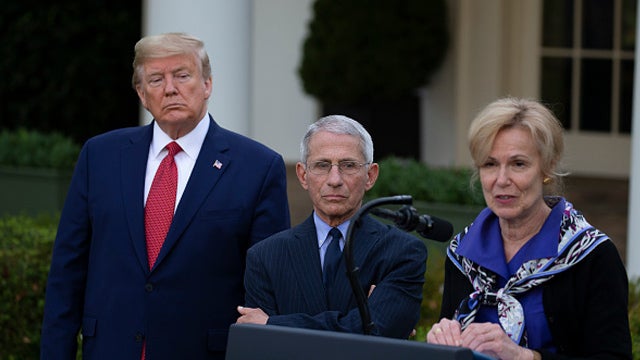
The Apple stores in China are open, for example. The Apple factories, the Foxconn factories producing Apple products are opening in China. The epicenter where it began. We now have more cases here than they had in China. What I’m suggesting is the ChiComs are not telling us the truth about what’s going on in China still. Don’t misunderstand. I’m not – (interruption) no, no, no. I’m not suggesting some kind of evil plot. Not yet. And if it is true, if it’s over in China, then how did they do it? We will never know because it’s a communist country.
And I’ll tell you what I think. If it actually is over in China, you know what they did? They went and grabbed people out of their homes in that town and they put ’em somewhere and left ’em to die. They put ’em in camps, they put ’em in the ground, they put ’em somewhere. The Chinese — communism cares so little, compared to a system like ours, about our people, they don’t tell the truth. There was video of families being dragged out of their homes early on in Wuhan. We didn’t know anything about ’em, sick, healthy, what have you.
But if they’ve got this under control, it’s because they have been willing to take measures we never would. ‘Cause it’s a serious thing. I don’t know if I believe these status coming out of Wuhan. The coronavirus discovered there reported no new cases for a sixth straight day, a decline in infections for a fourth consecutive day. Only 31 new cases reported today. COVID-19 cases surged past 724,000. The death toll topped 34,000 by early Monday, according to the John Hopkins data and the website. Italy has reported more than 10,700 deaths. And now we’re being told that New Orleans is the new Italy, according to the Drive-Bys, ’cause they went and did Mardi Gras down there and they did it fearless.
Okay. To the phones as promised. We’re gonna start with Renee in Cincinnati. Renee, so great to have you on the program and talk to you today. How are you doing?
CALLER: Rush, it is so wonderful to hear your voice. You sound fantastic.
RUSH: Thank you. Thank you very much. I can imagine how reassuring it is. It is to me too.
CALLER: It absolutely is. Hey, Rush, I just wanted to comment on, you know, the press conferences that the doctors give, I think if they were more forthcoming even about things they don’t know — and I realize that sounds paradoxical — I think it would go a long way, because reasonable people still don’t see the numbers supporting the measures that are being taken to the degree that they are. Does that make sense?
RUSH: I know what you’re saying. I know exactly what you’re saying.
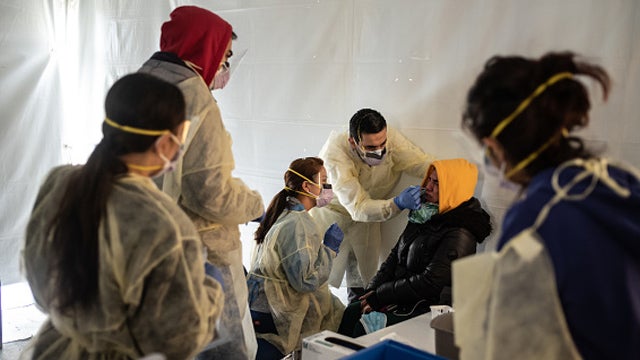 CALLER: And I think that it also has a lot to do with — I’ve heard a lot of criticism about our seasoned citizens not taking this as seriously as they should, and just in some areas. And my response to that is because they’re not sissies. I mean, no one wants to get sick. We’re all following the guidelines, we’re doing what we need to do. We’re all protecting our older people and our most vulnerable with underlying conditions.
CALLER: And I think that it also has a lot to do with — I’ve heard a lot of criticism about our seasoned citizens not taking this as seriously as they should, and just in some areas. And my response to that is because they’re not sissies. I mean, no one wants to get sick. We’re all following the guidelines, we’re doing what we need to do. We’re all protecting our older people and our most vulnerable with underlying conditions.
But, Rush, our older people have been through everything from smallpox to polio, all the things for which we’re vaccinated now but that used to kill people. They’ve been through the great war, the Great Depression, Vietnam, World War II. I mean, you know, these aren’t people who haven’t weathered storms. And I don’t think we give ’em enough credit for that.
RUSH: All right. Now, look, you’ve brought up two different things. You brought up the seasoned citizens and whatever is being said about them and you’ve also — essentially what you brought up is modeling.
CALLER: Yes.
RUSH: You’re upset with the doctors for these wild-ass numbers here that we don’t see verified in the real world. We’re talking about 100,000 could die, 200,000 could die, 2.2 million could die, and yet we don’t see anything like that yet, and you’re wondering what do they know that they’re not telling us. And if they would just tell us then everything would be a little bit better because we wouldn’t have to speculate what they’re holding back, because that creates what do they really know, how bad is it really that they’re not telling us because they’re afraid of a full-on panic. Is that what your thinking basically is here?
CALLER: Yes, pretty much. I mean, thinking, reasonable people are actually coming to the conclusion of there’s got to be something we don’t know.
RUSH: Now, why? Why are you saying that?
CALLER: Well, because the numbers don’t support the measures being taken.
RUSH: They don’t yet.
CALLER: They don’t yet. That’s correct. But, I mean, ironically, they win either way because, you know — I mean, I hope that I’m right and, you know, this goes quicker than they anticipated —
RUSH: All right. Let me weigh in on this very quickly. I appreciate the call. Thanks very much. The minute I hear anybody start talking about models and modeling, I blanch, and I have to fight an immediate bias against it. The bias I have against modeling is justified because it comes from climate change. Sorry to introduce another subject here. But, folks, the whole subject, the whole topic, the whole business of climate change…
Everything you think you know about climate change is based on models. There’s not a single scintilla of data yet to back up these outrageous claims of rising sea levels by 2050, by 2030. It’s only in the models. The melting glaciers. We know of the fraud in Algore’s movie with the fraudulent pictures about supposedly melting ice for the polar bears. We got more ice at the poles than we’ve had a long time. It’s modeling, and it’s political.
The left has politicized everything in order to advance their political agenda, and the reason why climate change predictions are 20 years out, 30 years out is because it isn’t happening. Man-made climate change is not happening. Climate change is happening. The climate changes constantly. The earth is constantly changing. The universe is never static. The debate about whether man-made climate change is the reason, American-made climate change?
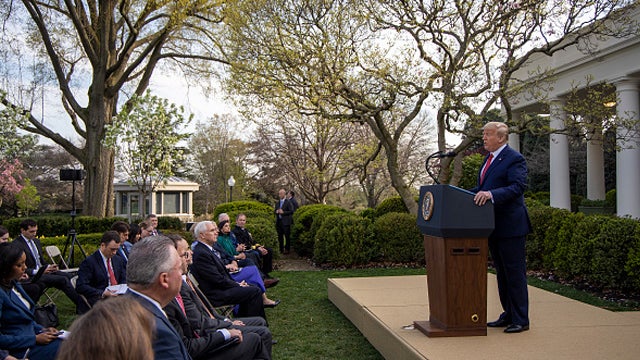 I’ve just never bought it for a whole host of reasons I’m not gonna bother you with now. But it’s classic. It’s all modeling data, and it’s no different than garbage in and garbage out. So we have a bunch of people here in the medical community and the National Institutes of Health and so forth who are data driven. It’s their business. And they are using models to give us numbers.
I’ve just never bought it for a whole host of reasons I’m not gonna bother you with now. But it’s classic. It’s all modeling data, and it’s no different than garbage in and garbage out. So we have a bunch of people here in the medical community and the National Institutes of Health and so forth who are data driven. It’s their business. And they are using models to give us numbers.
Dr. Fauci on CNN this morning said, “I wouldn’t be surprised to see 100,000 deaths. I wouldn’t be surprised to see 200,000 deaths.” Yesterday at the briefing, the number 2.2 million deaths was used! But it’s no longer an active number. It should not have been used. That’s a number if we did nothing. That’s a number if there weren’t any social distancing. That was if we didn’t shut anything down.
That number — 2.2 million — is irrelevant now because we are doing things.
We are social distancing, we are staying at home, we are sheltering in place.
So the 2.2 death number is up there as a top-tier outlier now, sort of as a baseline where everybody can say we’ve been successful when the actual numbers are known and come in. But this… I’ll give you an example when we come back from the break for modeling, and I talked about it a little bit in my very limited time here on Friday: Neil Ferguson in the U.K.
His original prediction of death in the U.K. was massively high, and he made one change to it because it was outrageous. It was millions of people dead in the U.K. from coronavirus, and then he factored, “Okay. What happens if we socially distance?” Just one input-data difference, and it reduced the death toll in his own projections, in his own model by a factor of 50. Twenty thousand is the maximum death toll U.K. in his model now.
I’ll give you the details we come back.
BREAK TRANSCRIPT
RUSH: Now, let me, as promised — before going to the phones — get back to this, ’cause this is really fascinating, folks.
Let me share with you a little interesting fact that I just received from a friend in California. California has had one death from coronavirus per 250,000 residents. That is about two deaths per day of the 700 plus who died in California every day anyway.
So you have 700 people in California, on average, die every day from something in California. Other causes. Right now, the coronavirus death rate in California is one death per 250,000 residents. So two of the 700 deaths that are happening every day in California anyway are related to the coronavirus.
Does that strike you as high?
Does it strike as low?
Does it shock you and surprise you?
To me, that sounds incredibly… If you have 700 people a day in California who die anyway from — and I don’t mean to sound cavalier about it. It’s just we’re talking stats here. If 700 people per day die, and two of those deaths are from coronavirus in California, does that sound like we have a runaway pandemic in California, the coronavirus, or not?
Now, it bounces off one of the calls we got in the previous hour. We had a woman call who said she’s not sure she believes what she’s hearing from Fauci and the rest of the gang. By the way here is… Grab sound bite number 6. Here’s Fauci. We’ll get into the discussion of the reduction in modeling deaths with Dr. Fauci himself.
This was last night in the Rose Garden at the briefing. A reporter said, “Dr. Fauci, can you just share with us your understanding of how bad it will be? Can you just tell us how bad it will be so the American people will be prepared for it?”
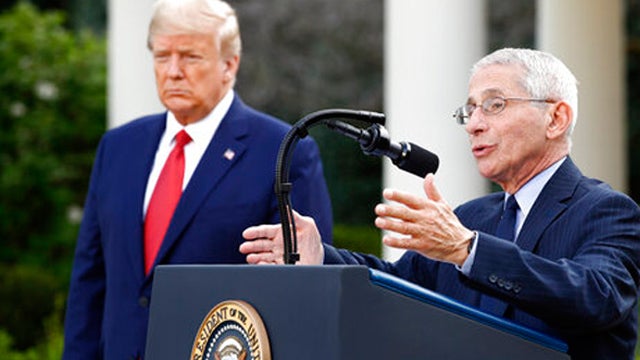 FAUCI: A model is as good as the assumptions that you put into the model. And very often, many of these assumptions are based on a complexity of issues that aren’t necessarily the same. So when you give a model, you have the worst extreme, you have the best extreme. Often the worst extreme means that you don’t do anything.
FAUCI: A model is as good as the assumptions that you put into the model. And very often, many of these assumptions are based on a complexity of issues that aren’t necessarily the same. So when you give a model, you have the worst extreme, you have the best extreme. Often the worst extreme means that you don’t do anything.
You just, as we say, let it rip and let it go. If you go to the low end, that means you actually mitigated really to the utmost. So what I like to do as a scientist, a physician, a public health official, is to not ignore models but say, “Look at the data as it’s evolving,” and you do everything you possibly can to mitigate that, instead of getting overly anxious about the extremes of the model.
RUSH: Well, but that’s exactly what we’re doing. We’re “getting overly anxious about the extremes of the model,” and we’re doing it on purpose. Dr. Fauci’s on TV saying, “I can see a hundred thousand deaths. I can see every city having it. I can see every city affected. I can see 200,000 deaths.”
And we had the number 2.2 million deaths mentioned yesterday in the briefing. That’s if we did nothing, but that number’s out the window because we’ve done a lot. We do social distance. We’ve shut down everything! That 2.2 million figure was if we did nothing; so why is it even being used? Well, it’s being used so that we can show great success at the end of this.
“It could have been bad, but look what our work did!”
But I have an anti-bias when it comes to models because of how they have been used politically to advance agendas, and they are supposedly unassailable because they are said to be science. Science has been corrupted by the American political system. Everything has been as a means of advancing the left-wing agenda.
Now, let me go back to this European model, for example. There’s a modeler by the name of Neil Ferguson. He’s an epidemiologist. He created the very highly, often cited Imperial College London coronavirus model. It’s been cited by organizations like the New York Times. It has been instrumental in government policy decision-making. And he offered a massively downgraded projection of the potential death toll last Wednesday, and it has not been reported. Ferguson’s model — and this is where the 2.2 million number comes from — Ferguson’s model projected 2.2 million people dead in the United States and 500,000 dead in the U.K. from coronavirus if no action were taken to slow the virus and to blunt its curve.
Well, we’ve taken all kinds of action. The 2.2 million figure’s out the window now. The model predicted far fewer deaths if lockdown measures were undertaken. You know how much? In the U.K., Mr. Ferguson made one change in his model and that change resulted in a projection of 500,000 dead to 20,000 dead. And it was based on one thing: the inclusion of social distancing.
So when he created the original model, guess what he didn’t put in? He didn’t put in social distancing, people staying six feet away from each other. He didn’t put in a number of the business shutdowns and the quasi-quarantines and all that. He just put 2.2 million if we do nothing. Bam, it gets reported: 2.2 million dead United States, 500,000 dead, U.K. Then he goes back and he adds one item — social distancing — to his own model, and it reduces the 500,000 death figure in the U.K. to 20,000, with just the inclusion of social distancing. And guess what? Up to half of that 20,000 were gonna die anyway because people die anyway every day before the coronavirus came along.
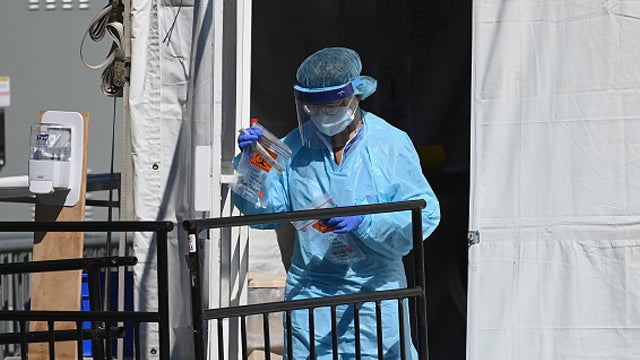 So just by adjusting one parameter, social distancing, the researcher got a 50 times reduction in projected death. And folks, 50 times in a model is huge. The people that deal in climate models consider a five times difference in future warming rates to be the difference between it being a nonissue versus a serious problem. Fifty times is huge.
So just by adjusting one parameter, social distancing, the researcher got a 50 times reduction in projected death. And folks, 50 times in a model is huge. The people that deal in climate models consider a five times difference in future warming rates to be the difference between it being a nonissue versus a serious problem. Fifty times is huge.
And I’ll tell you, this leads to something else that we’re gonna have. When this is all over, when this pandemic has passed, let me tell you what a big question is gonna be: Whether we needed shut down the economy at all. I guarantee you that is gonna be a debate, when this is all over. And if this chloroquine stuff keeps being prescribed and if the chloroquine stuff continues to work and if people who are prescribed this medicine get well sooner, and if there is a much shorter shutdown period than anybody thinks, there’s gonna be — well, even if there isn’t, there’s gonna be a massive debate over whether we needed to shut down the economy.
And then this is gonna happen next year. The coronavirus is here. It’s like the flu, it’s like everything else, it’s gonna have a seasonal characteristic to it. The difference with the flu is we have so many vaccines that can handle so many different mutations of it. We don’t yet have any of that on the coronavirus. It’s virgin territory. We will at some point. We just don’t yet. It’s gonna come back. What do we do then? Do we shut down again next year? Do we go through this all over again in order to greatly reduce the loss of life?
And one of the things I’m concerned about, I don’t think we’re ever gonna get a definitive answer. When this is all over and the debate is should we have shut down the economy, was this necessary, you know damn well it’s gonna be a debate, you know damn well it’s gonna be a question and you know damn well people are gonna raise it. And what if we never get an answer to it? Because what if we never get the actual data on how many people practice social distancing? How do we know how many people are actually behaving?
We can’t prove that people are engaging in it. We can only hope that they are and then use the resulting data that we hope is positive to tell us that they are. And if when this is all over and the question starts being asked, was it necessary to shut this economy down, was it necessary to do everything we’re doing, there are gonna be people who are gonna tell you, no, it wasn’t. I don’t know who they are. I just know statistically there gonna be people, “This wasn’t necessary.”
All this stuff is in our future, and all of this stuff is gonna keep our culture and society roiled, to an extent. And if it is determined that it wasn’t necessary to shut down this economy, then you realize the questions that’s gonna spawn? Well, then who did it and why and for what purpose?
BREAK TRANSCRIPT
RUSH: Let me tell you one more thing about this modeling business, folks. The fact that this researcher in the U.K. could make a reduction of 50 times in his own model proves the worthlessness of the model. But that’s not the problem. If you have a model like this guy Neil Ferguson created that shows 2.2 million deaths in the United States, 500,000 deaths in the U.K., if you do nothing, and then you go make one change, social distancing, and it reduces your number by 50 times, that is extreme sensitivity.
That means that the people that run these models can have them say whatever they want to say down the road, and they are experts because they are scientists, they will be able to prove anything based on their modeling assumptions if they can change them willy-nilly to get a 50 times reduction or in some cases 50 times worst-case scenario. We’re gonna be prisoners to these models because these people are gonna be the experts and they can now tinker with them however they want.
This guy’s admitting that the input data was random and subjective. He creates a model that shows 2.2 million dead in America, 500,000 dead in the U.K., the media runs with it, the number’s out there, you can’t take it back. He makes one adjustment to it. What if he put another adjustment in? What if he adds shutting down the country for over a month, what if that reduces the number of deaths down to 10,000? Why didn’t he? He just put in one little change here.
People use models for economic forecasts, and they are experts, and we are treated to the data in weekly economic news reported by the Drive-By Media, you would not believe how much of the news in economics and weather and climate is based on modeling, projections, not actual, real data. For example, in the climate change world, there isn’t any evidence yet that any of the projections in the models have yet come true.
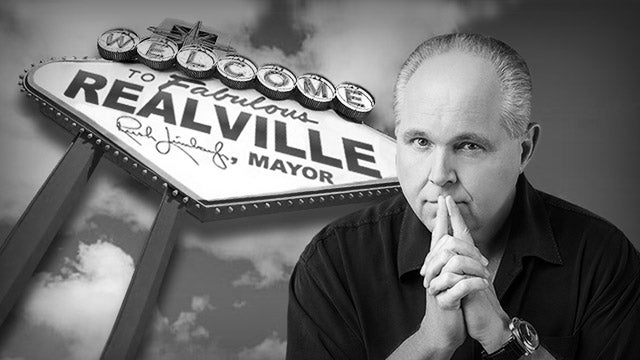
Now, you’re gonna have people tell you that Rush Limbaugh’s full of it saying that. But temperatures are not rising through the roof. Sea levels are not rising. None of what they’re projecting — the polar population, all of the things they use to scare you and your kids, none of it has yet come true. And they’ve been predicting this stuff since the 1980s, folks, and they keep revising their projections with their models for another 20 years out, another 30 years out.
They have gotten control of the economic agenda. They’ve gotten control of the manufacturing of automobiles. They’ve gotten control of all kinds of things because of these models that they are using to predict doom and destruction in the climate. Now they have been given expert status when it comes to health issues. Katie, bar the door.
BREAK TRANSCRIPT
RUSH: Now, according to the graphic here on the page at the Fox News Channel, we are at 2,575 coronavirus deaths or ChiCom flu deaths. So 2,575 American deaths from the China flu. Now, yesterday at the briefing the doctors informed us that the peak is in two weeks. Did I hear that right? They said the peak is in two weeks. Just in time for Easter.
Do you realize, folks — you may not know this — that this Easter will be the first Easter — think I heard this correctly — the first Easter in the history of America where churches are shut down and no services will take place other than virtual and online? First ever in American history. So 2,575 deaths, according to Fox News up there. The doctors inform us that the peak is in two weeks, and what did Dr. Fauci say? Hundred thousand deaths, 200,000 deaths. Did he mean in two weeks? Or did he mean in total when this has run its course?
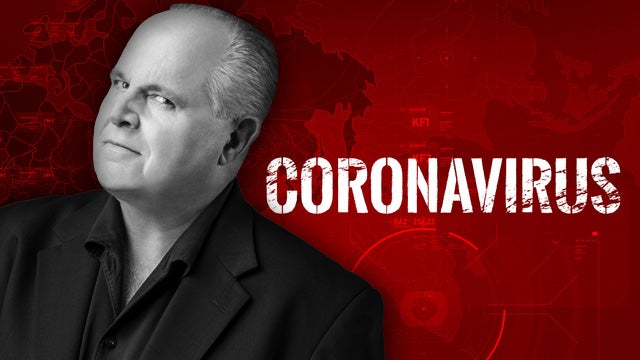 Does anybody think we’re gonna go from 2,575 deaths on March 30th to a hundred thousand deaths on Easter Sunday? Maybe you could pull the data into a model and have it say that, but that sounds a little excessive. So what did he mean by peak? When is the peak? He said the peak’s in two weeks. He said there could be 200,000 deaths, 100,000 or could be 200,000. Depends on how well we mitigate. Mitigate means social distance, shutdown, quarantine, shelter in place, all that.
Does anybody think we’re gonna go from 2,575 deaths on March 30th to a hundred thousand deaths on Easter Sunday? Maybe you could pull the data into a model and have it say that, but that sounds a little excessive. So what did he mean by peak? When is the peak? He said the peak’s in two weeks. He said there could be 200,000 deaths, 100,000 or could be 200,000. Depends on how well we mitigate. Mitigate means social distance, shutdown, quarantine, shelter in place, all that.
Here’s Robert in Hartford, Connecticut. Greetings, sir. Great to have you with us on the EIB Network. Hello.
CALLER: Greetings, Rush. How you doing?
RUSH: Good, sir. Thank you.
CALLER: Hey, I’m a Hispanic-American. I’ve been listening to you since I was 17 years old. I’m 42, and it’s truly a pleasure to speak with you.
RUSH: Thank you, sir, very much. I appreciate that.
CALLER: I’m gonna try to be brief. I worked for Hartford Hospital in Connecticut. And I heard the lady say earlier that the numbers don’t add up. I believe our president has made drastic requests for changes throughout the country, and I truly believe that his requests have been followed through by many Americans. I also believe, even if you’re in the hospital, we sent over hundreds of people to work from home. These numbers, whatever they’re expecting to happen or what might happen, we don’t know what’s gonna happen. All we can do is hope for the best and prepare for the worst.
Our government’s doing everything within their power without destroying the economy. There’s a balance that has to be kept with our president in this country. Why? So we can avoid people suffering. So, yeah, he wants to get people back to work. I can understand his desire. I can understand what he’s trying to do. We have to work together on this. There’s no time for fighting between what do you want, what do you need, we should get this, we should get that. No, we know what we need. Provide what we need so we can take care of our patients. And we can move forward. We don’t know what’s gonna happen. We don’t. We’re just praying for the best. Thank you for your time, Rush.
RUSH: You bet. You bet. Well said. That’s Robert in Hartford, long time Hispanic devotee of the EIB Network, self-confessed.
BREAK TRANSCRIPT
RUSH: Here is Michael in Tulsa. Welcome, sir. Glad you waited. You are on the EIB Network.
CALLER: Hi, Rush. Longtime listener, first-time caller.
RUSH: Thank you, sir.
CALLER: Very proud to be speaking with you, sir.
RUSH: I appreciate that.
CALLER: I’m a data engineer — or data scientist and an engineer — here in Oklahoma in the energy sector. I want to give your listeners some knowledge and background on data models. And, you know, you hear this in the media all the time, constantly. “Well, this model’s predicting this and that and especially…” It doesn’t matter the data set. It doesn’t matter if it’s coronavirus. It doesn’t matter if it’s global warming.
RUSH: It could be a hurricane track.
CALLER: Yeah! It could be a hurricane track. Doesn’t matter. It’s a model, right? And it’s trying to predict something in the future. It’s trying to predict, right? And one thing all scientists and engineers that make models on a daily basis know is that all models are wrong. Some are useful. And the key is that, they’re all wrong in their own right. Some are useful. And another thing is a lot… They speak of these models as if they are settled science, like global warming. “It’s settled science!” No, it’s not. You know, if you torture the data long enough —
RUSH: That’s a great point. If it’s settled science, why keep modeling it?
CALLER: Absolutely. And if you torture the data long enough, it will tell you what you want it to say, and —
RUSH: ‘Kin’ A.
CALLER: You can look at… You have different parameters, right, different variables that you’re making a regression or a different model off of and you can figure it out statistically which ones are statistically significant based off their P value and you can adjust them to get the results that you want. You can remove ’em, add ’em, to get the results you want.
So I want everybody — all your listeners — to understand that just ’cause it’s a model doesn’t make it true and settled science. That is not fact — and another thing. With global warming, it really irritates me is they put out in the media all of these data models. “We’re projecting this! We’re projecting that!” Well, where’s the accountability and the validation of the model or the actual data?
RUSH: Well, there can’t be. It’s a great point. It can’t be because their projections are 20 years and 30 years out when a lot of people aren’t gonna be alive to verify their accountability. That’s exactly the science behind this. There cannot be a consensus in science either. “A consensus of scientists say…”
It’s not possible. Science is not about consensus. It’s not about a vote. It’s not about who agrees with who. It’s about the empirical data, and a computer model is not empirical data. I’m glad you called, Michael. I appreciate it. Thank you very much.
BREAK TRANSCRIPT
RUSH: Here’s Jerry in Atlanta. Welcome to the EIB Network, sir. Great to have you with us. Hi.
CALLER: Hey, Rush, great to hear your voice.
RUSH: Thank you, sir, very much.
 CALLER: You bet. A quick comment and then question for you. Hey, the action from numbers and math, it’s not to make simple things complicated but it’s more to make complicated things simple. And all these numbers and statistics that we keep seeing and thrown at us without a perspective or context, they’re useless. And so my question to you would be, how come Dr. Fauci and Dr. Birx aren’t using these numbers and statistics they have and putting them more in context or perspective each day for the American people to better understand?
CALLER: You bet. A quick comment and then question for you. Hey, the action from numbers and math, it’s not to make simple things complicated but it’s more to make complicated things simple. And all these numbers and statistics that we keep seeing and thrown at us without a perspective or context, they’re useless. And so my question to you would be, how come Dr. Fauci and Dr. Birx aren’t using these numbers and statistics they have and putting them more in context or perspective each day for the American people to better understand?
RUSH: Well, you know, I would have to speculate on Drs. Fauci and Birx. I know they’re data slaves. They live and breathe and die by it and I know that they’re into their models and all that, and I know that by trade they have to being doomsayers. At the end of the day they have to be doomsayers. They have to warn of the worst. Whether they enjoy that or not, I don’t know.
Look, I’m dancing around something here. I alluded to this last Friday in the all-too-brief phone call I made to the program to let you all know I was still alive. I have a building and an ongoing problem with, we call it the deep state, but whatever it is, this layer of experts in everything, be it intelligence, foreign policy, health, whatever. We didn’t elect any of these people. And we’re told they’re experts and that we must abide and we have no choice.
And I’ve just seen too much in the past three years of this large group of people trying to undermine Donald Trump in the 2016 election. I’m sorry. I cannot put it out of my mind. I’m not accusing anybody of anything here. I’m just saying it would be silly to not factor this in. You can’t deny intelligence guided by experience. We have seen how this deep state operates. What are you grimacing at in there? You think I’m overstepping on this, Snerdley? I’m just sharing my honest — a guy asked me a question here.
By the same token, Donald Trump, President Trump seems to have profound respect for both these people, so that’s fine. I just can’t erase what I’ve seen from the so-called deep state and the attempt to undermine the entire election of 2016. And I know that we elected Donald Trump to fix stuff like this. We didn’t elect these people that we don’t know who weren’t on a ballot, who have not campaigned to us and who about whom we don’t know much, other than their stated and proclaimed level of expertise in their field of expertise, in this case infectious diseases and overall American health.
Folks, this is the danger of hosting a show and being honest. A guy calls you, asks you what you think about something, and bammo. He says, where do these numbers come from, we have no perspective, no context for these numbers. And I know what he means. We have a press conference yesterday, and we’re told a hundred thousand, maybe 200,000 people could die. Oh, no. No, 2.2 million people could die if we don’t mitigate. But we did mitigate. Why did they put that number out there yesterday? The president did too. Why’d they do it? It’s unnecessary. The number’s not relevant anymore. Nobody is saying 2.2 million. But it’s out there now as a high-water mark.
So it’s gonna be used to show how successful the efforts have been. So we’re told a hundred thousand could die, 200,000 could die, the peak in two weeks, but he doesn’t mean the peak death in two weeks. He means total run time. We’re at 2,828 deaths right now according to a little box up there on the Fox News Channel. So that we have 80,000 deaths to go, 180,000 deaths to go before this runs its course. And the caller said, “Based on what?”
If you go to the CDC, you will see the CDC is reporting a decline in deaths. I just saw the chart. But then the CDC says you can’t use this yet because there’s a lag time here, and the data is not — well, then why are you putting anything out if you don’t have all the data yet? But you could plot a chart using CDC data today which shows you the deaths are going down, but nobody believes that.
What if it happens to be true? That’s why the caller is asking, where is the context, where’s the perspective on these numbers? Now we’ve got Governor Cuomo — grab audio sound bite number 30 — Governor Cuomo is out saying what’s happening in New York is gonna happen everywhere. How does he know this?
Now, see, he can say this ’cause he’s governor and nobody’s gonna say that’s irresponsible. But if some guy on the radio starts questioning all these numbers out there and saying, “Wait a minute. Why this, why that?”
“Well, this is irresponsible.” Here’s Governor Cuomo this afternoon in New York City. A press conference, a daily briefing. And this is a portion of it.
CUOMO: Anyone who says the situation is a New York City only situation is in a state of denial. You see this virus move across the state. You see the virus move across this nation. There is no American who is immune to this virus. I don’t care if you live in Kansas, I don’t care if you live in Texas, there is no American that is immune. What has happened in New York is not an anomaly. There is nothing about a New Yorker’s immune system that is any different than any other American’s immune system. So in many ways New York is just a canary in the coal mine. What you see us going through here you will see happening all across this country.
RUSH: Okay. Well, the gauntlet’s kind of been thrown down there. Now, one thing New York has that not a lot of other places have is the population density. So even before we began the social distancing there wasn’t a whole lot of that going on in New York. There was a lot of closed, cramped quarter contact. How many flight attendants live in your average 800 square foot studio, 12? How many are there at any one time? By the way, if the airlines keep shutting down like this CNN’s gonna have absolutely no audience whatsoever.


